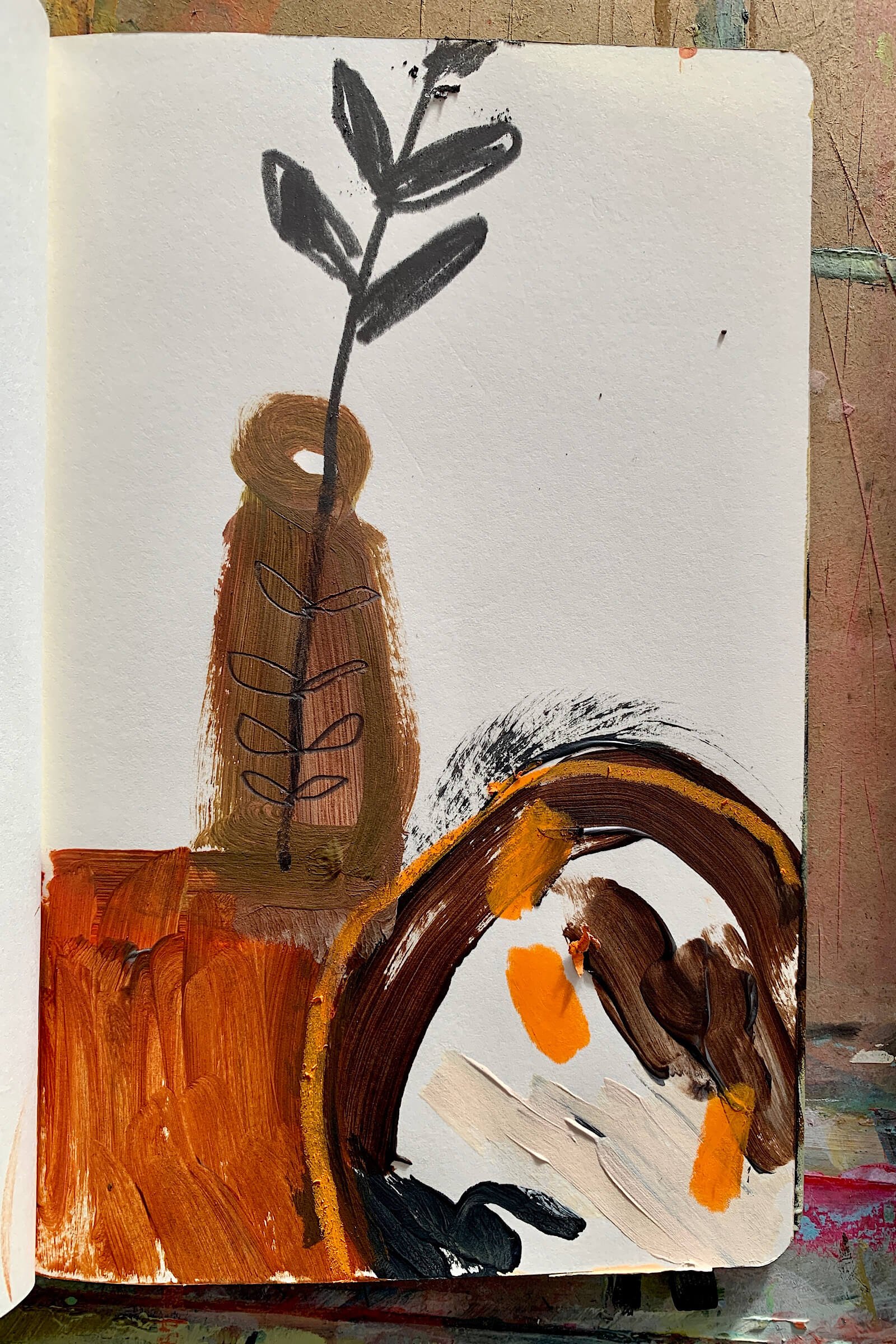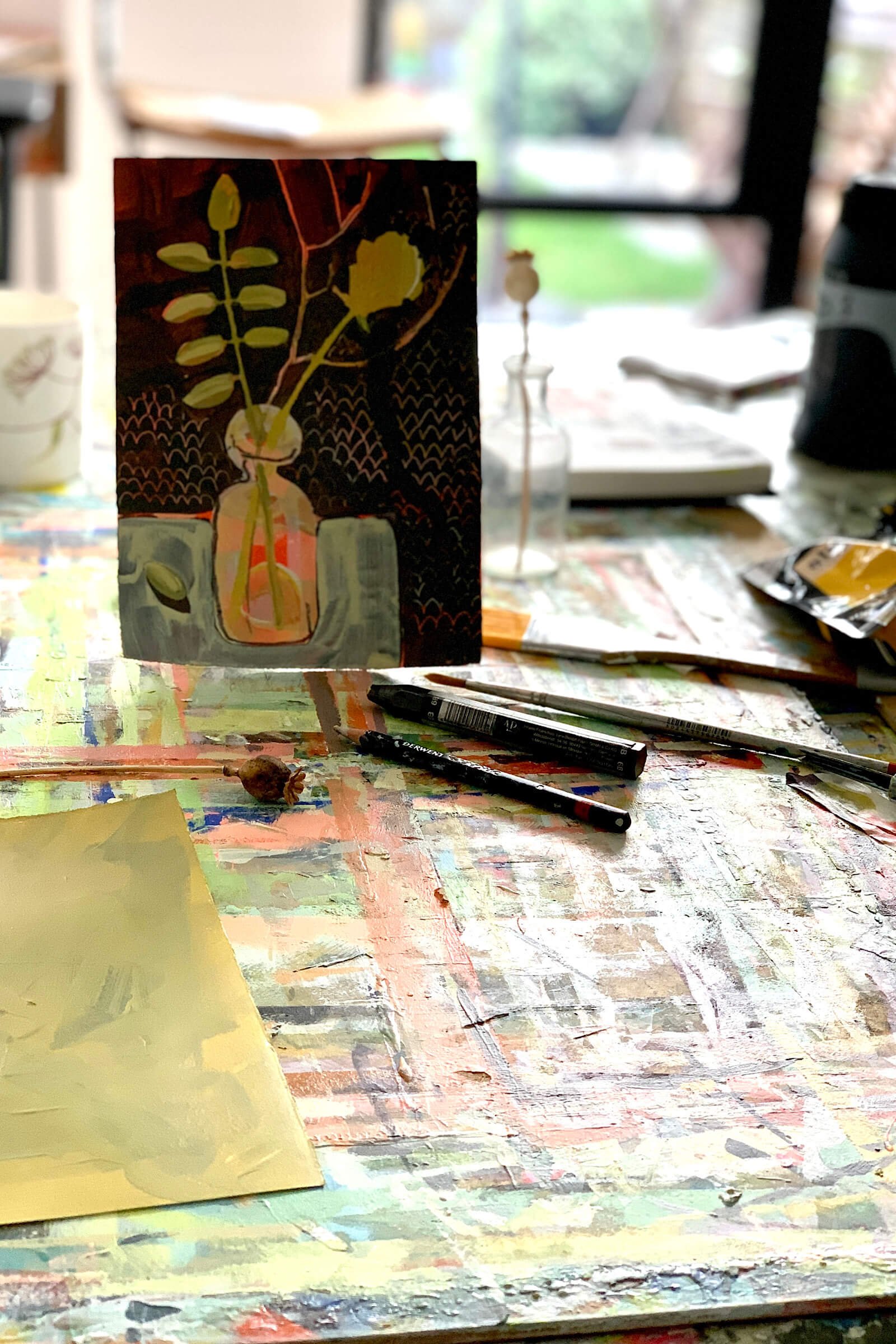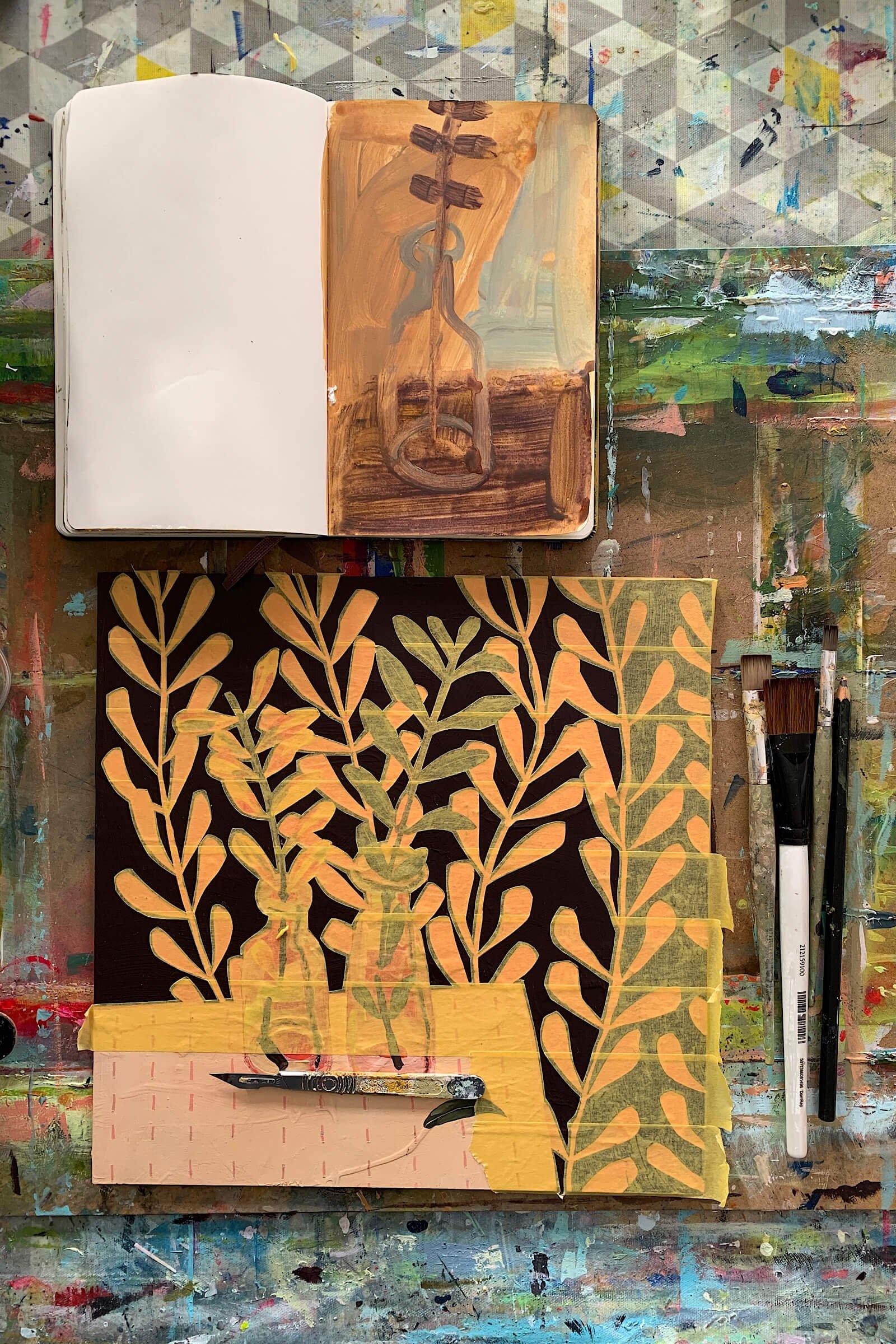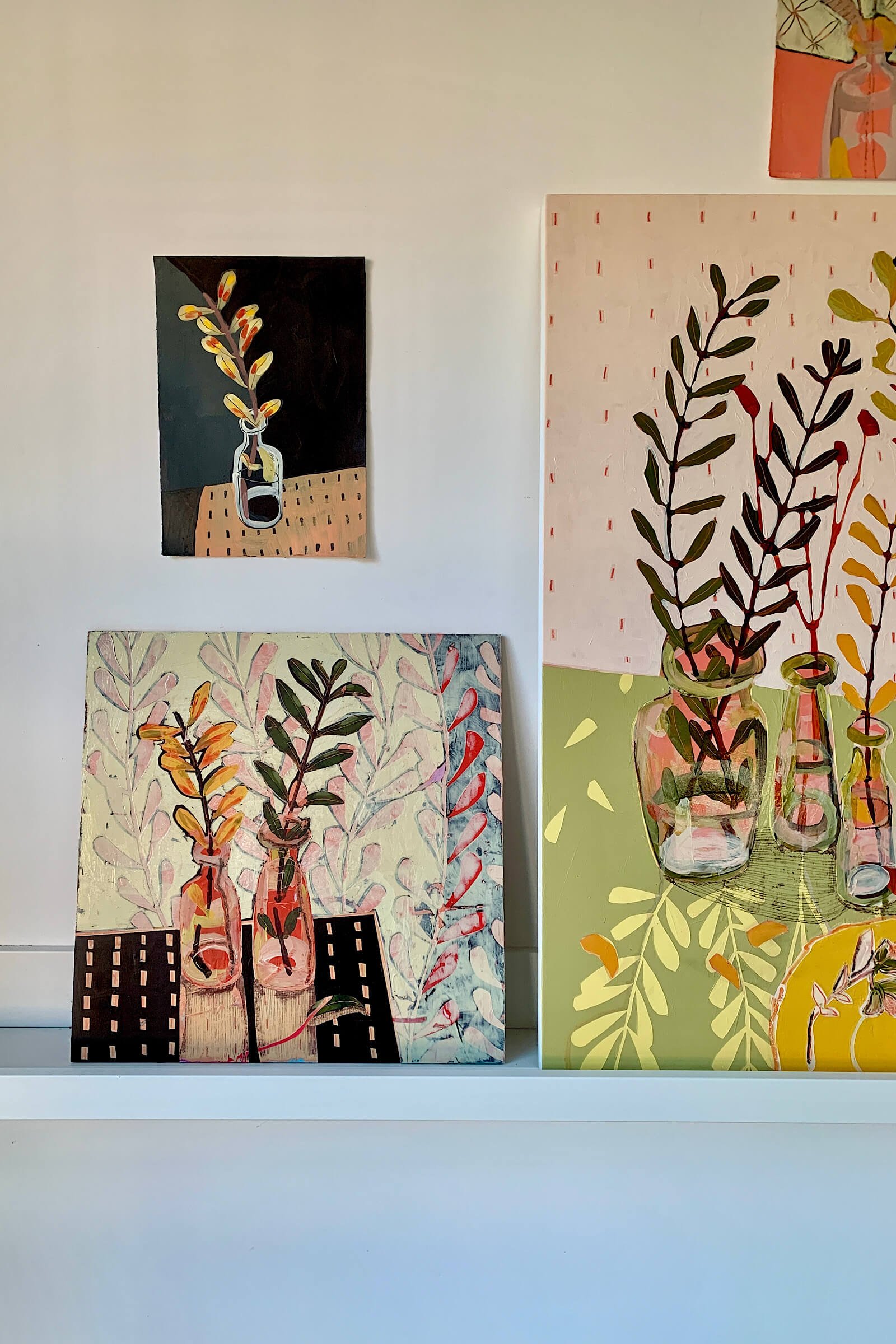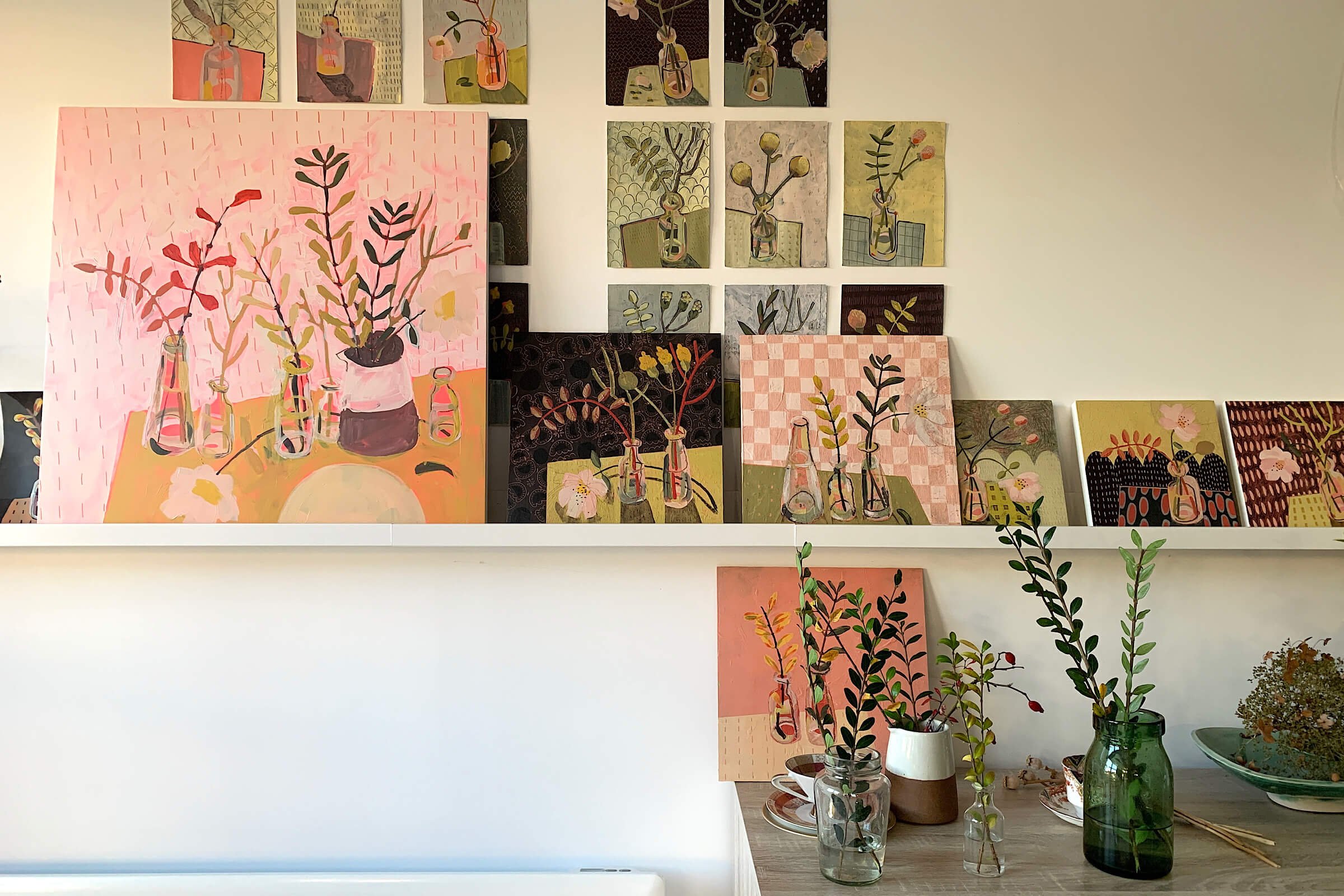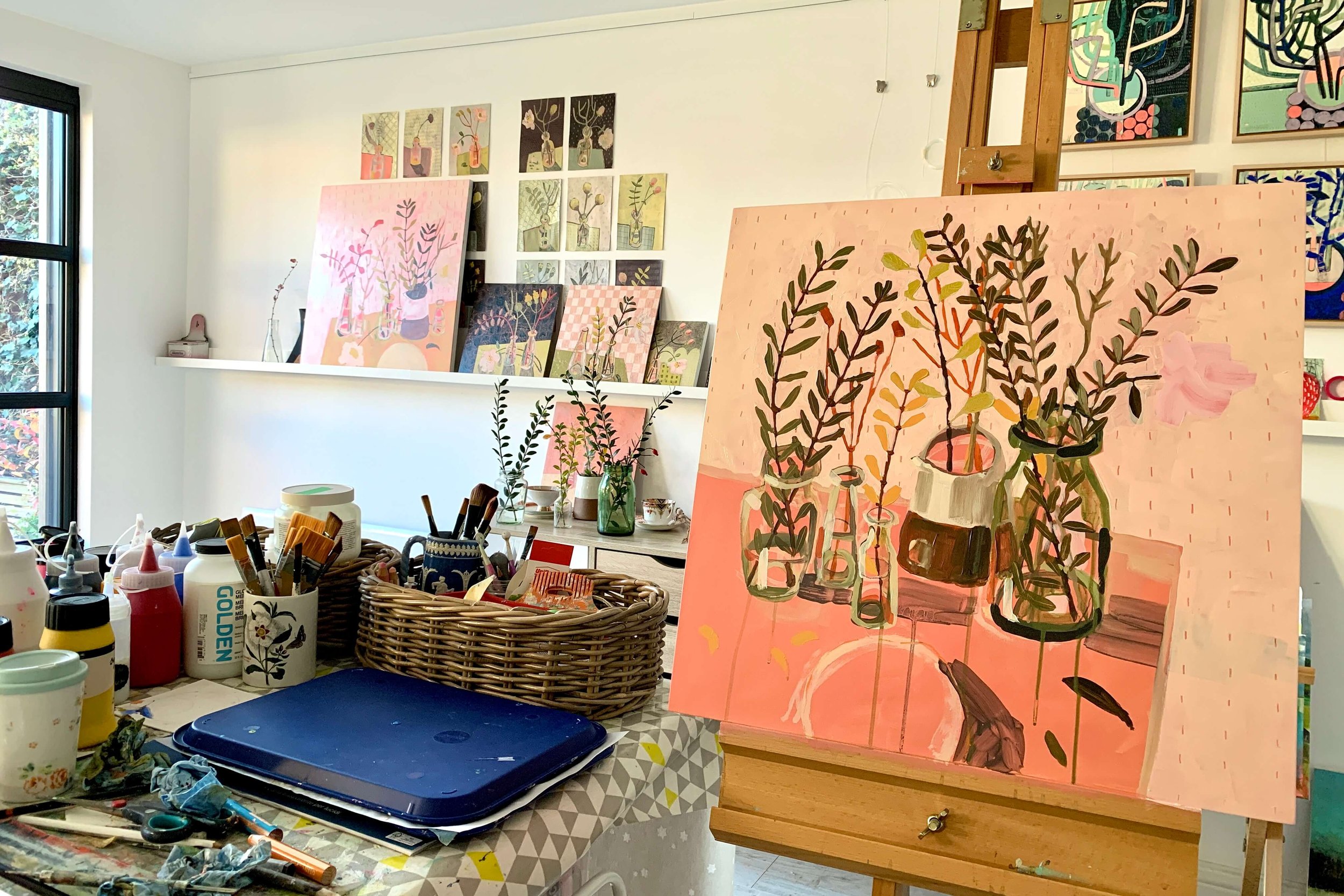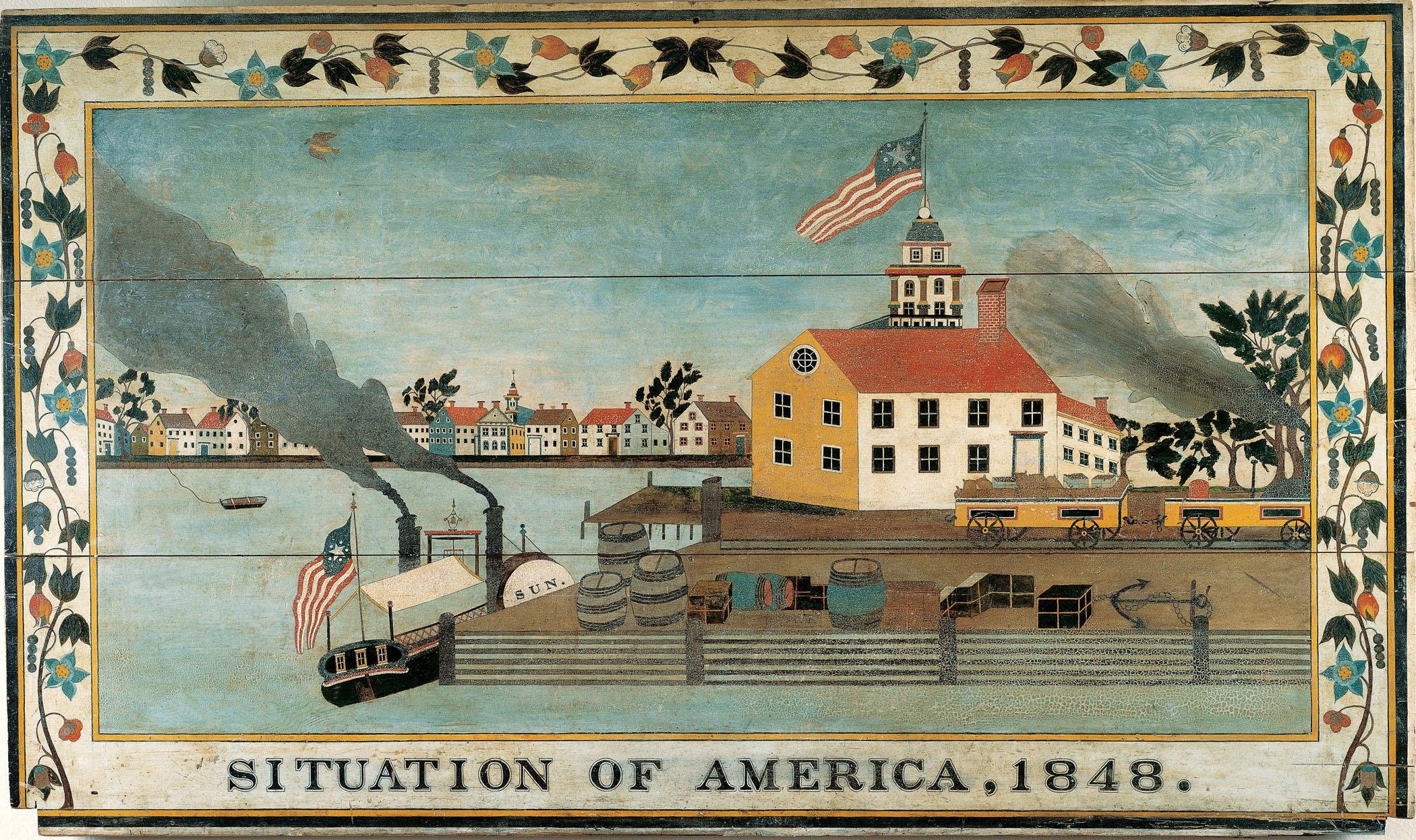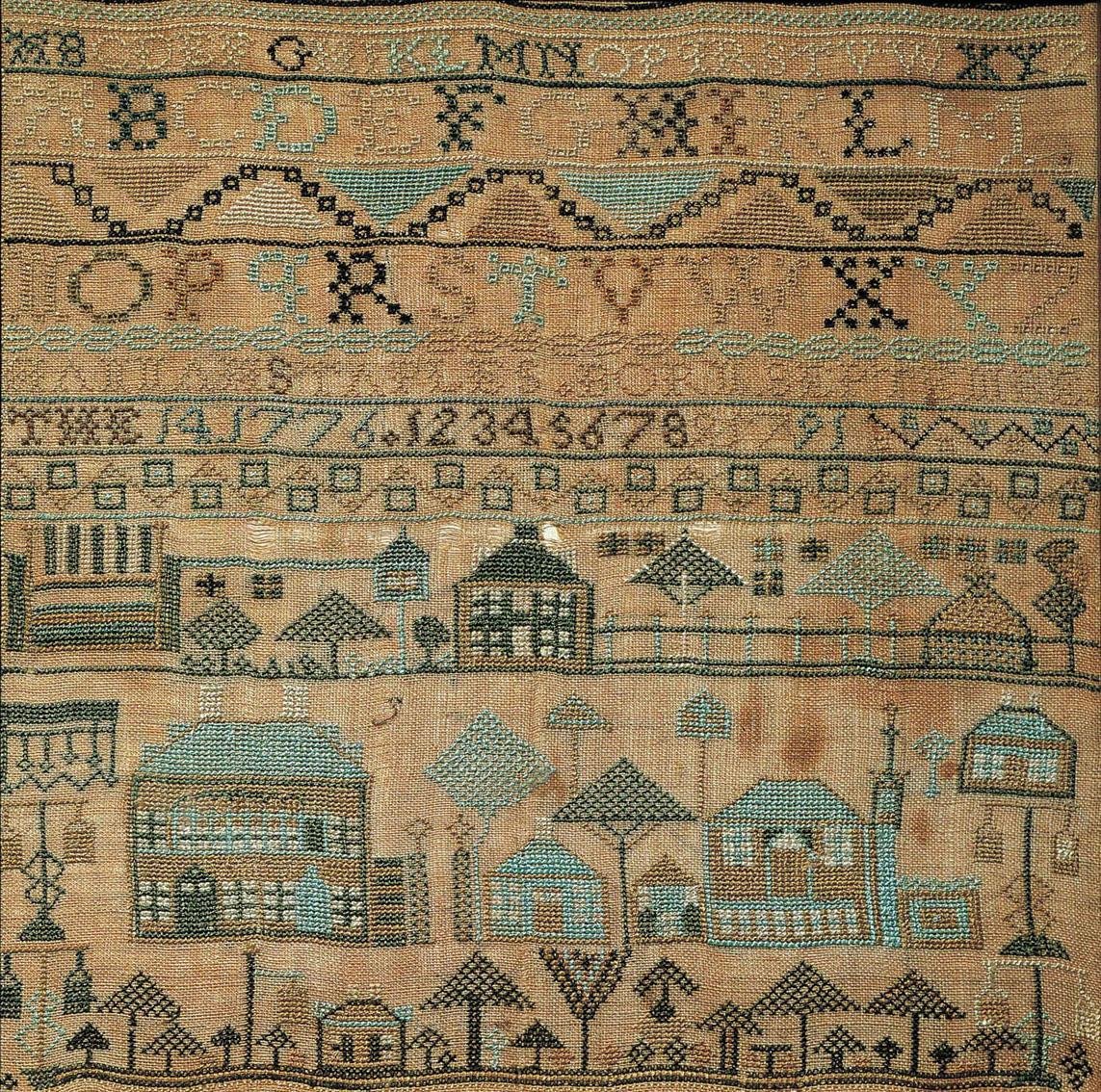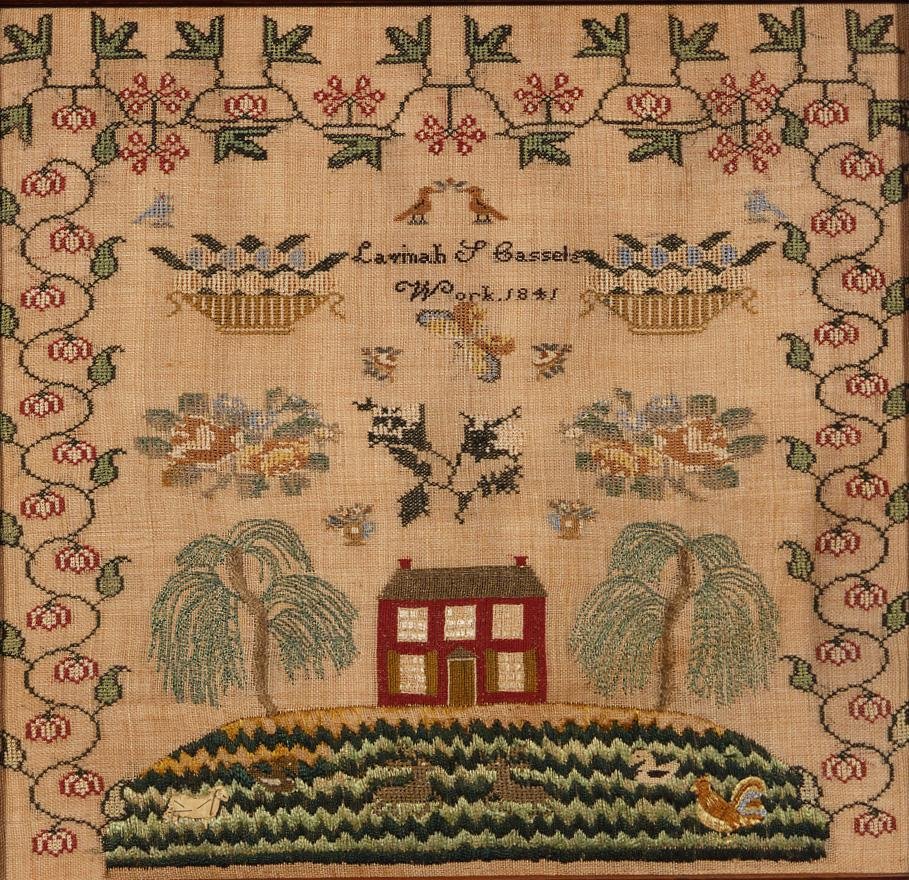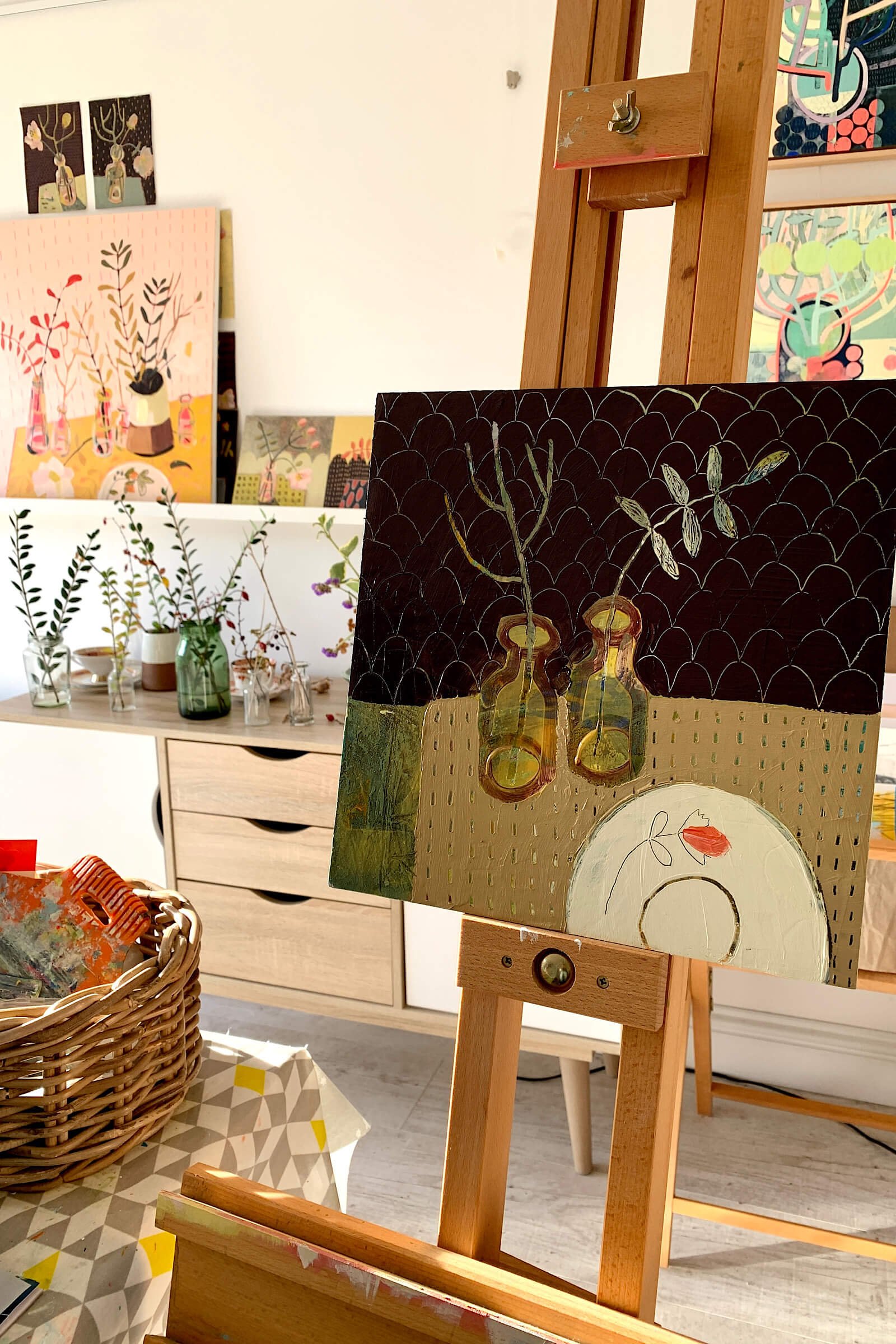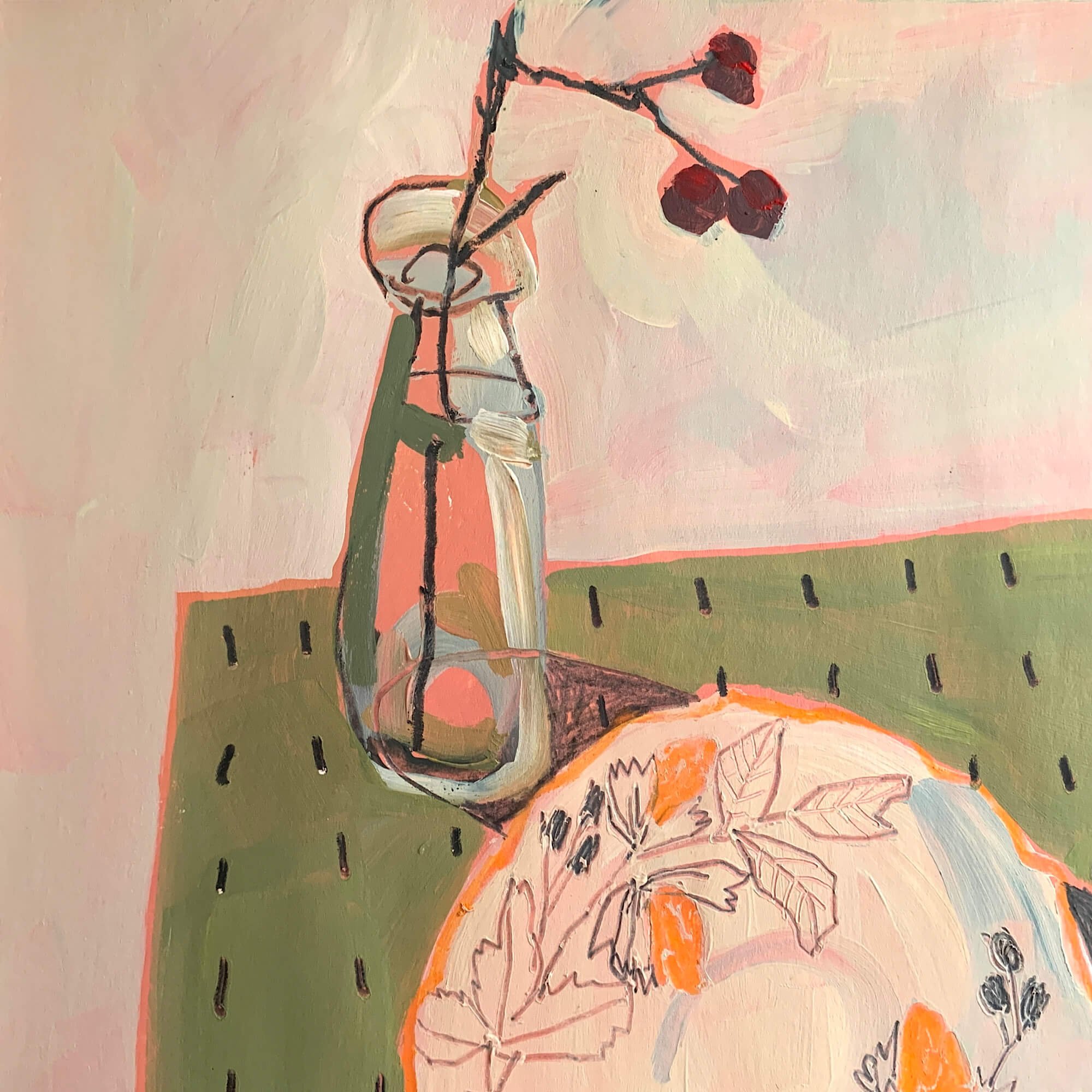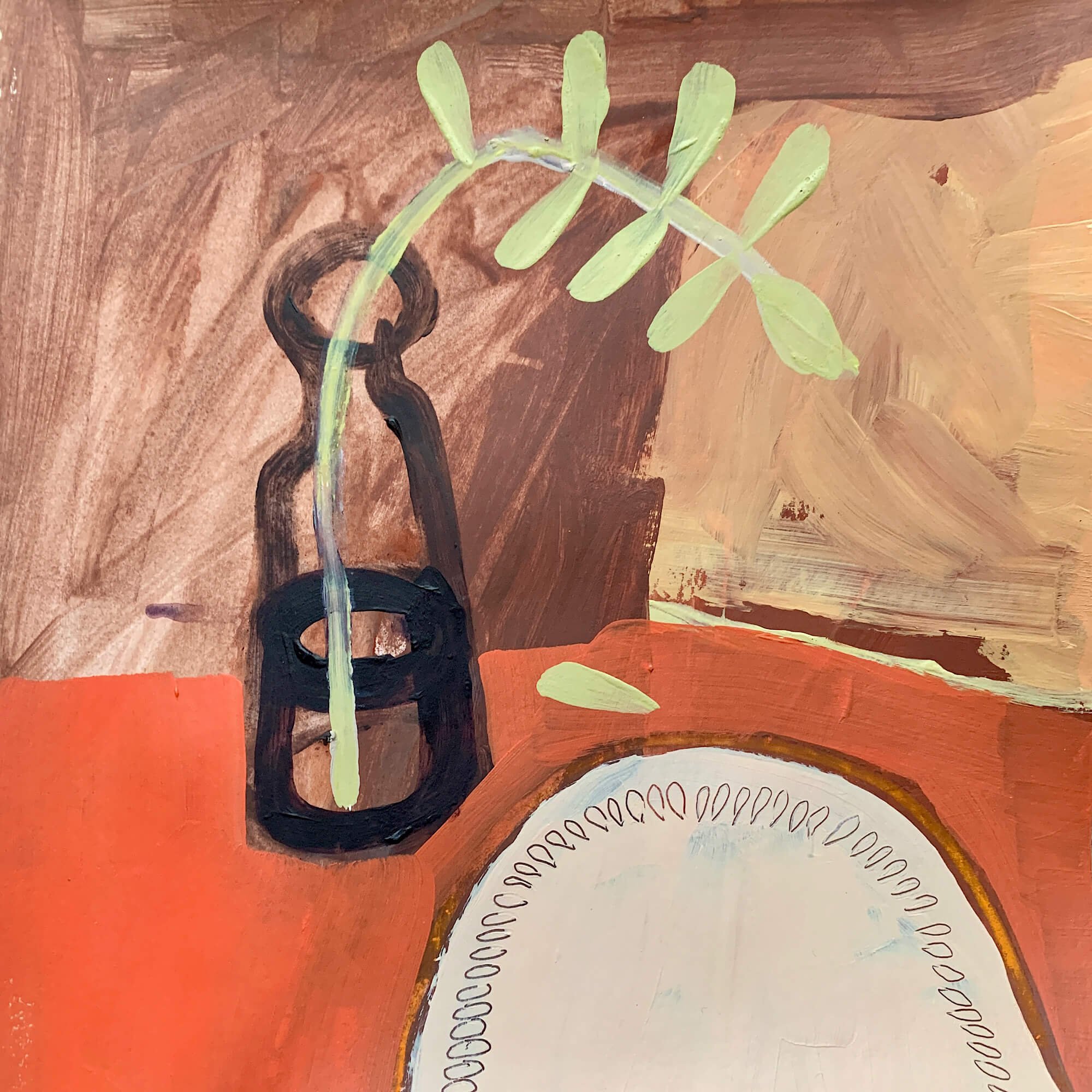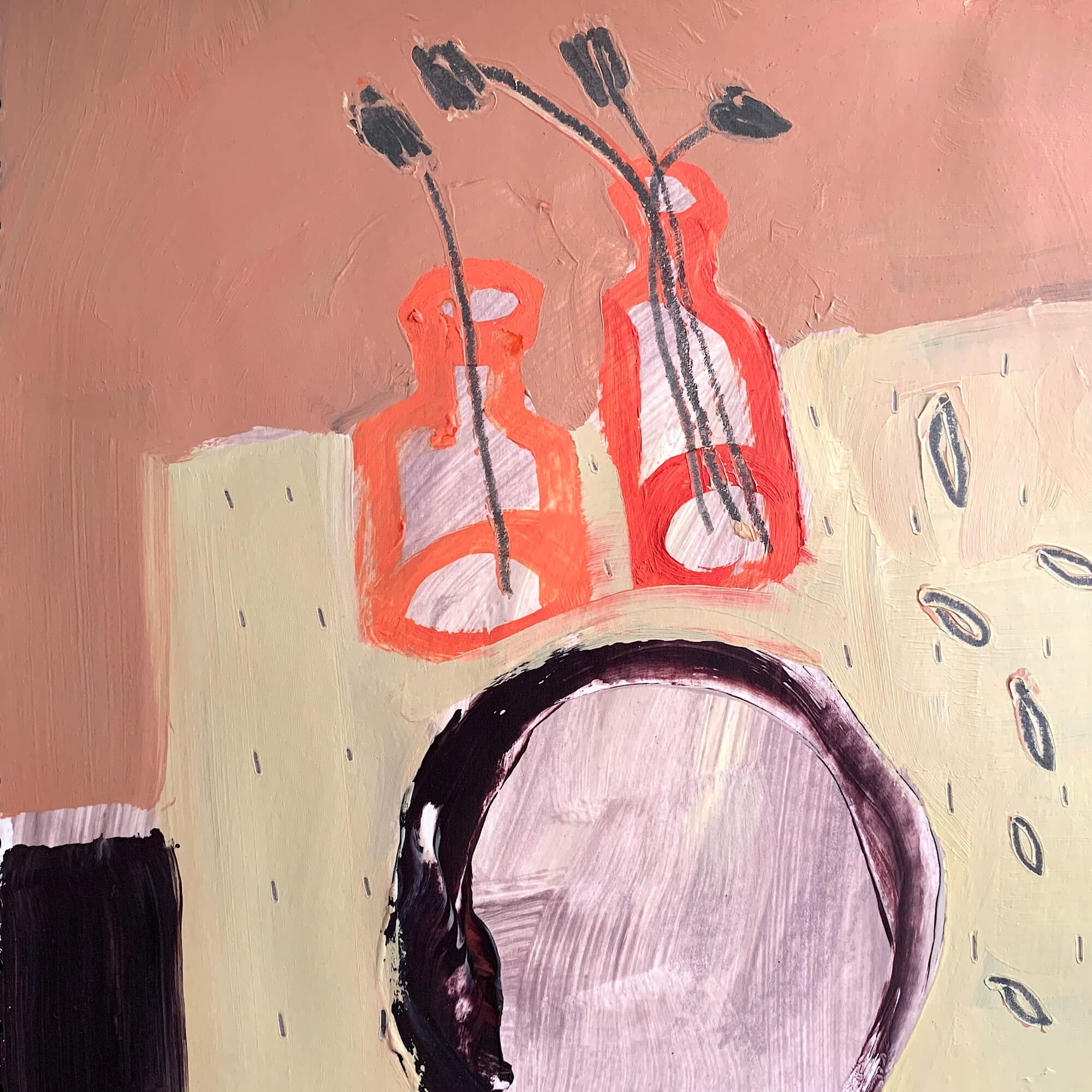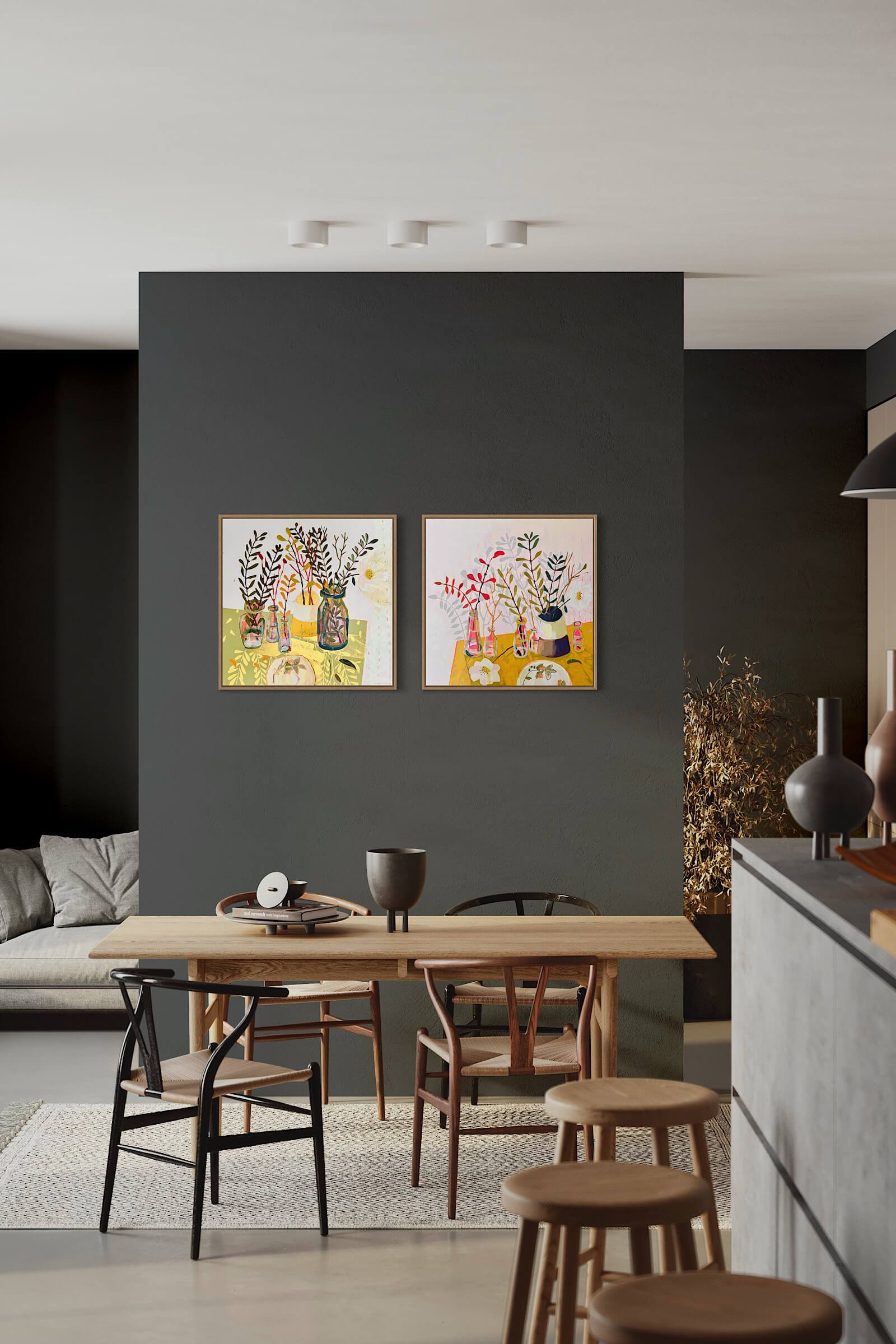Unveiling the Inspiration Behind a New Collection: A Glimpse into the Studio
When inspiration strikes
In fine art, inspiration often strikes in unexpected places, weaving its way into our creative endeavours and shaping the essence of our work. The seeds of inspiration for my latest collection, Bottle & Branch, have emerged from three key influences: brushes, clarity and folk art. The developing collection is a still-life exploration into glass bottles, branches, pattern design and the pursuit of simplicity.
Brushes
While exploring important art-making aspects in recent collections, such as composition, value contrast and colour harmony, I've noticed an increased use of controlled techniques to apply paint that doesn't involve brushes. This realisation leads to some feelings of self-doubt… "Do I actually know how to use a paintbrush properly?" Quite a statement for an artist to make, don't you think?
In my work, brushes make looser, less controlled marks. For this reason, I like big brushes and dislike the tight, controlled and sometimes contrived marks of a smaller brush. This is why I like making more precise marks in other ways.
The curious thing is I'm not enjoying the disconnect from my brushes. Big or small, I want to feel confident using them. I want to produce painterly marks. I want the looseness of a brush stroke to be visible in my painting with all its glorious texture. I want to develop an instinctive synergy with my brushes. I want to enjoy reaching for them knowing how to use them to full advantage. So, I've tasked myself with the Bottle & Branch collection to paint with various brushes. So far, it's been surprisingly enjoyable.
Clarity
The second influence in my current practice is a strive for clarity and simplicity. Sometimes, these things feel elusive, like mythical beings sent to taunt and trick. Simplicity is hard to achieve. Making something seem effortless takes enormous amounts of skill and control. The strive for simplicity is about simplifying my practice to find clear and sustainable ways of achieving my goals. There is a desire to move aside unnecessary obstacles that block focus and, in turn, make it hard to see the joyful aspects of my work. The funny thing is that while I write this account, my actual paintings become ever more complex… perhaps that is because space is being made for them to grow? Let's hope so.
Folk art
The third influence in my current practice is folk art. Particularly referencing the use of a naïve perspective. I've talked before about using forced perspective, particularly with the Pots & Plates and Kalanchoes collection plant pots. This use of an almost flattened view of objects comes from the short and impactful time I lived in North America as a child.
Situation of America, 1848, Oil on wood panel, American Folk Art Museum
Much of my visual memory from this time in America revolves around folk art and craft. At the time, folk art influences were fashionable in home interior design. Everything from tea towels to wallpaper was decorated in colours and motifs plucked for the aesthetic of a pioneering past. Creating cross-stitch samplers and quilts using traditional patterns was an encouraged pastime in the community in which I lived.
Early memories of seeing imagery with simplistic perspectives have long stayed with me. Buildings, for example, were often depicted as flat shapes standing proud in compositions. I particularly love the simplicity of such straightforward perspective decisions. Let a circle be a circle or a square be a square. Let's not complicate objects with complex perspectives; we should celebrate them for what they are. It's funny; I can feel my shoulders relaxing just writing down these words… it sort of takes the pressure off representational art-making.
A View of Mr. Joshua Windsor’s House & Co. Rufus Hathaway (1770-1822), Oil on canvas, American Folk Art Museum
Converging influences
What does all this have to do with bottles and branches? After much soul-searching, the answer has become straightforward. It all clicked into place when I identified the importance of the three influences: brushes, clarity and folk art. The bottles were already in my studio, like specimen jars holding botanical references for future investigation. The specimens are from my garden, imagination and local walks. Small branches are abundant and easily collected.
The folk art style lends itself well to the simplicity of the subject matter. Its roots are steeped in the decorative arts, which offer a tangible link to current explorations into surface pattern design. Creating the paintings fuels the desire to develop patterns and vice versa. The clarity in seeing and understanding these converging influences is very empowering. It's helping me understand myself better and embrace the road ahead.
The story so far
In The Garage, it is now go big or go home time. Four large boards are in my studio in various stages of creation. They are 60cm x 60cm, the largest surface I've worked on in recent years. Decisions are being made on grouping the small bottle and branch objects in larger-scale paintings. For example, how might the composition be anchored? What is the relationship between the perceived table edge and the wall behind it? Is such a relationship even necessary? How might shadows move around the objects in the compositions? How will pattern and texture play into the overall design?
Two of the larger paintings are starting to answer some of these questions. As is often the case with my paintings, I could ask all the questions in the world before I start, but it's only when the work begins that the answers start to reveal themselves. These paintings want to be packed with leaves, busy with activity and showy, revelling in the scale and abundance of the work.
Viewing the collection
The grand plan is to launch the Bottle & Branch collection in Spring 2024. I've been invited to participate in the Henley Arts Trail at the marvellous River & Rowing Museum right by the Thames, 3rd - 6th May. This is a fascinating opportunity. Over the time I've lived in the Chilterns, I've enjoyed visits to this museum with Little Bird. We've explored the Wind in the Willows experience, played with interactive displays in the Rowing Gallery and enjoyed discovering the artwork in the Piper Gallery. During an early visit, when my art practice was in its infancy, I recall saying, "What must a person do to exhibit in this prestigious place?"… it would seem the simple answer is just to be asked! If that's not subconscious goal-setting, I don't know what is!
River & Rowing Museum, Thames Room
Would you like more detail on the Henley Arts Trail?
Find all the information you need on my events page and make sure your name is on the BRIGHT News list for all the juicy details about events and exhibitions.




